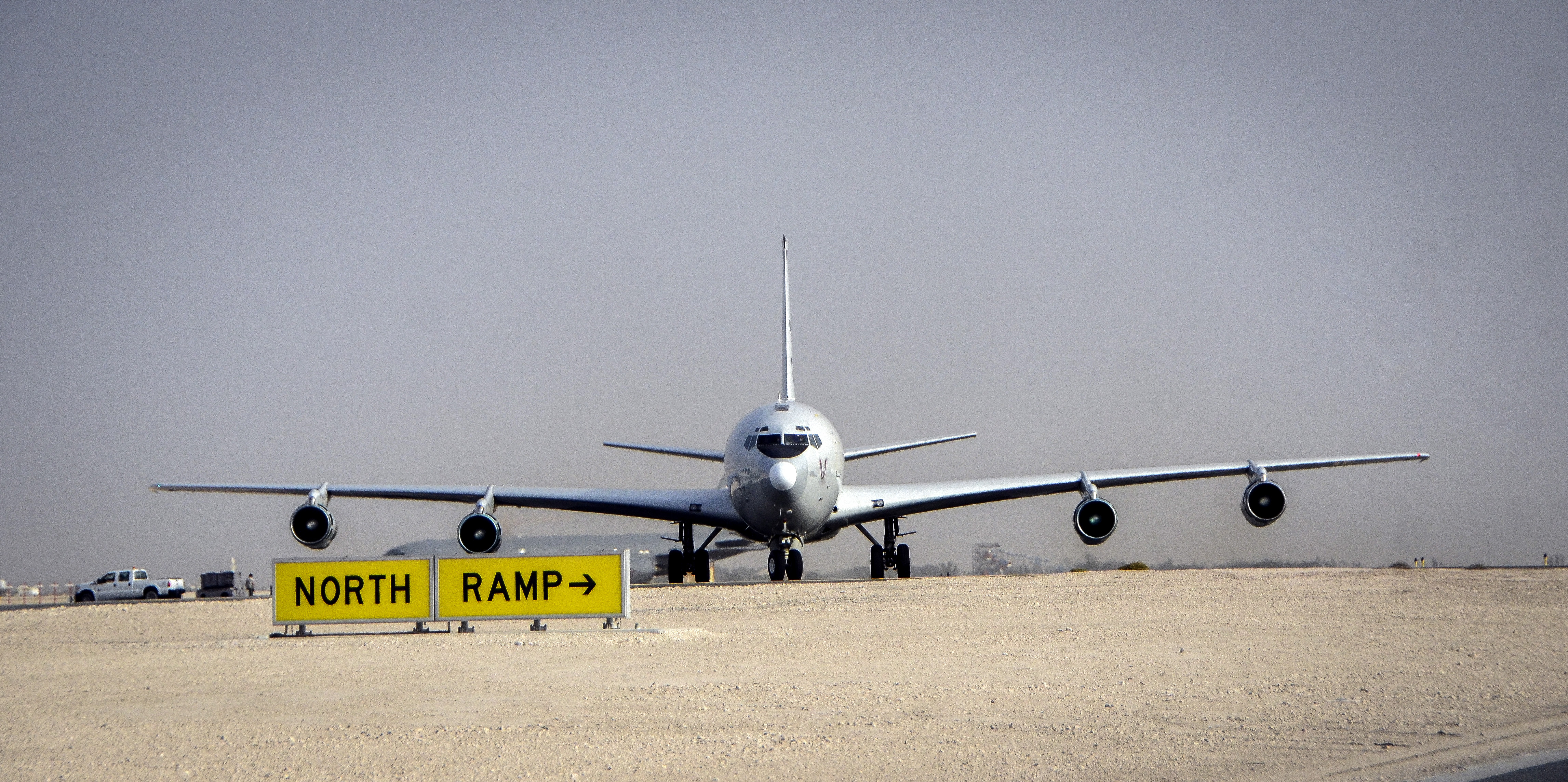An E-8C JSTARS returns from a mission at Al Udeid AB, Qatar, May 1, 2014, after reaching a milestone of 100,000 flying hours to include more than 88,000 hours in the US Central Command area of responsibility since 2001. Air Force photo by SrA. Jared Trimarchi.
The fiscal year 2018 Air Force budget request represents “the best balance of our readiness and modernization” given “the fiscal constraints we face,” Lt. Gen. Arnold Bunch told Congress on Wednesday.
“We had to make tough choices,” said Bunch, the Air Force’s top uniformed acquisition official.
In terms of unfunded priorities, “first on our list would be readiness,” Bunch told the House Armed Services tactical air and land forces subcommittee. A prime example is the E-8 JSTARS program. More than a shortfall of funding, Bunch said, “What I have is a shortfall of ability to get them in the air and have them available to support the mission.” Recapitalizing that system, he said, is a top priority. In the meantime, the service is performing “service life studies in a variety of areas” to make sure “we can keep that aircraft viable” until its replacement comes online.
In his written testimony, Bunch also said the Air Force is committed to keeping only six squadrons of A-10 aircraft, down from the current total of nine. The move is driven again by the need to balance fiscal priorities, said Lt. Gen. Jerry Harris, USAF deputy chief of staff for strategic plans and requirements. “If we had an unlimited budget we would keep everything we have and just continue to grow an F-35 fleet.” But in order to bring on between 48 and 60 F-35s per year, “we will be retiring some of our older airplanes and putting newer airplanes or more capable airplanes into these units.”
Bunch was questioned on the slow pace of the F-16 upgrade program, which is replacing the fighter’s legacy radars with active electronically scanned array (AESA) radars, among other things. He said a $244 million contract from May allows the service to procure 72 more radars in the program, which is on track to reach initial operational capability in the third quarter of FY19. The Air Force plans to fund at least 300 more upgrades in FY20, with an option to go as high as 450, Bunch said.
When asked about a reduction in the request for AIM-120D Advanced Medium-Range Air-to-Air Missile munitions in the FY18 budget, Bunch said the drop is related to a technical issue. The problem is “difficulties we’re having in getting the form fit function refresh on schedule and progressing.” He said the service “continue[s] to work with the company” to correct the problem. “We would love to buy more,” he assured the committee, “but I need them to get the production right.”
Harris also said the budget seeks to address the high demand for ISR products across the joint force—mostly by taking a long view and moderating production in the near term. “We have frozen our medium-altitude ISR at 60 lines,” he told the committee, “with the intent of getting the team healthy so that we can surge if required for the future.” When combined with an ongoing effort to recapitalize “our big-wing ISR,” Harris said the Air Force will be able to “focus our medium-altitude ISR into more important areas and be on-target much faster.”
